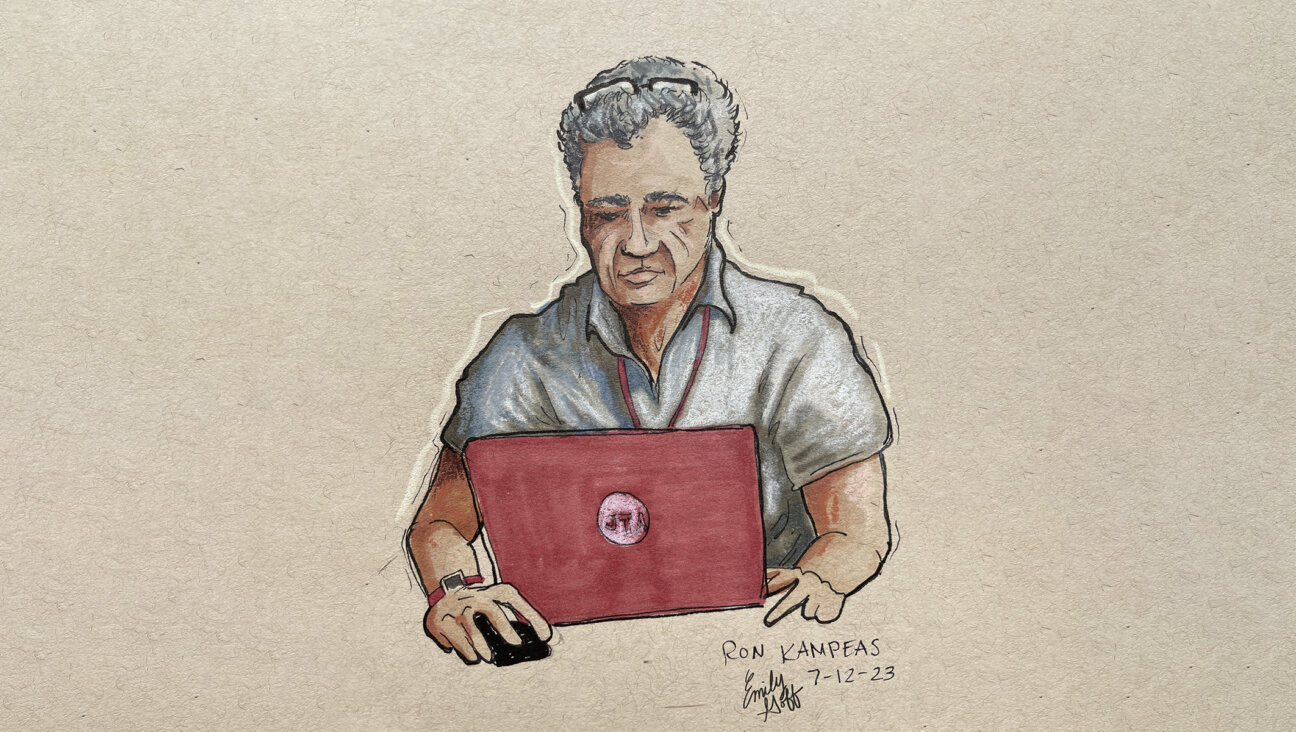Sorry, Jews — Voting With Your Feet Is Not An Option in the Age of Trump.

Image by Flickr
Some on the left have long fantasized about moving to Canada if Trump won. However, as John Oliver quipped, the only reason to move to Canada is a) you were born there, ** b)** you’re a goose, and c) it’s springtime. Foot voting is not a solution for democracy.
Foot voting is an inherently selfish individual move; it is not intended to serve the body politic. People leave the place where they grow up for many reasons: some positive (adventure, opportunity, advancement, love of another place) and some negative (personal or business set-backs, lack of opportunity, oppression, persecution, or other dangers). Jews have been foot-voters for centuries, too, often to escape persecution.
The day after the election, Yehuda Kurtzer, President of the Shalom Hartman Institute of North America, described his disorientation at temple B’Nai Jeshurun in New York City. Kurtzer was born in the United States and has four American grandparents, which makes him American enough for even Anne Coulter. The day after the election, however, Kurtzer himself seemed not so sure.
For centuries in Europe, Jews were an alien group. They kept and were kept separate from the wider Christian community. During the Middle Ages, Jews were alternately tolerated, expelled, converted, and killed. In 1516, the first ghetto was founded in Venice. In 1789, France was the first European country to grant citizenship to all of its Jews. But Jewish integration in Europe came to a bitter end in 1939 with the advent of World War II and the Holocaust. Foot voting made sense then, if you were able to do so.
Indeed, over the years many Jews from Europe have voted with their feet to arrive at America’s shores. Starting in 1654, Jewish settlers from Portugal and Spain made their way to New Amsterdam (Southern tip of Manhattan Island, NY) and other American colonial ports. From the beginning, American synagogues departed from European custom and did not attempt to tax or regulate the commercial lives of their congregants, thus establishing a separation between their congregants’ Jewish and worldly domains. Between 1840 and the outbreak of World War I, approximately 240,000 German Jews made their way to America. Between 1880 and 1924, more than 2 million Jews arrived from Russia, Austria-Hungary, and Romania. Today, the Jewish community in America numbers approximately 6 million.
The Jewish community in America, says Yehuda Kurtzer, tells itself two conflicting stories about how to relate to American culture and the American body politic. Both stories stem from textual tradition and deep historic memory.
Rabbi Gamliel in Aphrodite’s Bathhouse
The first is the happy story of Rabbi Gamliel (1st century CE) in the bathhouse of Aphrodite in Akko (Mishna Avoda Zahra 3:4). Akko was one of the most Greek cities in Palestine in the first century CE, and this bathhouse—an item of Greek culture—was dedicated to the Greek goddess of love, beauty and pleasure. While bathing in Aphrodite’s bathhouse, Rabbi Gamliel is challenged by Proklos, the son of a philosopher (a Hellenized Jew) to explain “what are you doing in the bathhouse?”—suggesting that is something rabbis should not do. But Rabbi Gamliel is very confident in his Judaism and his presence in the bathhouse as a Roman and a Jew. “We don’t answer questions about Torah in the bathhouse,” said rabbi Gamliel. But once finished, he patiently explained: “I did not go into her (Aphrodite’s) domain; she came into mine. Aphrodite is an adornment for the bath, but the bath is neutral space. I am an equal stakeholder in everything that is Rome, including this bathhouse, and the fact that you stuck Aphrodite on it, doesn’t make it holy or forbidden to me. I belong here as much as you do. We are responsible for this environment together.”
This story resonates with the experience of Jews in the United States. Jews can comfortably go to Catholic schools or Catholic hospitals, just as Christians can comfortably attend Jewish community centers. We are all equal stakeholders in the same body politic. We all belong here; we are fully American, even as we also have separate ethnic, cultural, class, religious, and sexual identities.
In Kurtzer’s taxonomy, there is a liberal and a conservative version of rabbi Gamliel’s story. The liberal version looks at the privilege and power gathered by Jews in this country and it asks, “What is our obligation? What are we to do with this power and wealth?”
The liberal answers, “We need to focus on our moral responsibility—Tikkun Olam, or repairing the world.” It is the Judaism that President Obama was drawn to in his encounter with the prophetic liberal Judaism he encountered in Chicago in his 20’s. It is a version of Jewish exceptionalism. Jews must act as a light unto the nations of the world, but also here at home.
For a long time, this self-identification in the liberal Jewish community has aligned with our vision of American exceptionalism: America as a beacon for universal democratic and human rights. Advocating for Tikkun Olam has been to advocate for our American values. This alignment of values has been a unique feature of the American Diasporic experience.
In the wake of this election, “it feels a little different,” says Kurtzer. By embracing Trump, an Electoral College majority has challenged the story of American liberal universalism and it’s alignment with Jewish Tikkun Olam. Trump voters have responded to anti-Semitic dog whistles. A white working class has rejected “elite” liberal values and asserted itself on the political landscape. By embracing Trump, they have put a xenophobic white nationalist stamp on this election and on our next administration.
The conservative interpretation of Rabbi Gamliel’s story is that Jews can assert their dominant position in society as a matter of right— not to improve values in the public square, but to build a powerful Jewish community with a strong identity. Right-wing Gamlielism has embraced right wing Israeli politics. The Sheldon Adelson, AIPAC, ZOA wing of the American Jewish community has embraced Netanyahu, ethnocracy, and permanent occupation of Palestinians. To the extent that American politics appears set to take a lurch to the right with white nationalism under a Trump administration, America’s newfound ethnic isolationism will fit right in with Israel’s right wing power Judaism.
Rabbi Akiva in the Evil Empire
The second story the American Jewish community tells itself is the bittersweet story of Rabbi Akiva in the evil empire (Berakhot 61b). Following the Bar Kokhba revolt (132-136 CE), Rome decreed that Jews were not permitted to study Torah. Rabbi Akiva ignored the decree and studied and taught Torah in the public square. “Are you not afraid?” asked Pappos ben Yehuda (another Hellenized Jew). And Rabbi Akiva explained, for him to not study Torah would be like a fish jumping out of the water onto dry land. He would perish. So although the water was dangerous with the decree not to study, what could he do? Indeed, a short time later, both Rabbi Akiva and Pappos were arrested, and Akiva was put to death. His flesh was raked with iron combs, but he died a happy man. And that is the age old story of anti-Semitism. Jews are a people set apart, and they may be accepted for a time, even a prolonged time, but sooner or later the jig will be up. They are not fully part of the body politic, and sooner or later the body politic will spit them out.
It is worth noting that Rabbi Akiva, who was put to death in 137 CE, did not vote with his feet. He did not leave for foreign shores. Like Socrates, he stood by his truth and he accepted his fate by being true to himself. And a mere 75 years later, by the edict of Caracalla, all free adult males living in the Roman empire were granted Roman citizenship, and Zippori was a thriving center of Jewish learning.
Here is Peter Beinart on the morning after the election:
As an American, I’m totally unprepared. The only way I can ground myself is as a Jew. My grandparents were born in Lithuania and Egypt. My parents were born in South Africa. They didn’t feel safe. They didn’t understand the people with whom they shared their country. They didn’t believe history marched forward toward a better day. …. My grandmother, who began her life in Alexandria and ended it in Cape Town, used to laugh at me when I boasted about America. She told me not to get too comfortable. She said a Jew must always know when to leave the sinking ship.
I’m not leaving America. It’s my country. I have to fight for it. I have to fight – every American Jew has to fight – to protect the American Muslims who right now must be terrified beyond belief. I have to fight the dozens of American Nazis who have descended on my Twitter feed to celebrate their victory. I still love America to my core. But I don’t trust it in the same way. And I don’t trust progress. I keep hearing my grandmother’s voice in my ear.
Beinart here is giving voice to the Akiva story. The liberal version of the Akiva story is to do as Beinart suggests: fight to protect the Muslims, and all other minority groups, because only in this way can Jews ultimately protect their own status as an ethnic and religious minority in the body politic. But Beinart also gives a nod to the conservative version, that Jews must hunker down to protect their own, and keep in mind the grandmother’s advice that you should keep your suitcase packed.
As for Yehuda Kurtzer, he says his belief has been shaken that his Jewish values will always align with the values of America. A little doubt creeps in, he says: perhaps, today, we are living a little bit more in a Rabbi Akiva story, and a little less in a rabbi Gamliel story. What happens when the Electoral College majority asserts values that are very different than the values we seek to live by?
Do we vote with our feet and leave? “I’m not leaving America. It’s my country. I have to fight for it,” says Beinart. Similarly, Kurtzer says that when a gap opens between the world we wake up in the day after an election, and the world we thought we were living in the day before the election, it’s time to double down and work that much harder to close the gap between the reality we are living in and the world of our stories, the world of the values we want to live by.
We’re all Immigrants in this Home
It sounds like good advice. I’m not Jewish but I live among the American Jewish community. I’m twice an immigrant. My family left Switzerland for Canada when I was 12 years old, and I immigrated to the United States when I was 24 years old. But America is my home. I will stay and fight for the values we want to live by.
A message from our Publisher & CEO Rachel Fishman Feddersen

I hope you appreciated this article. Before you go, I’d like to ask you to please support the Forward’s award-winning, nonprofit journalism during this critical time.
We’ve set a goal to raise $325,000 by December 31. That’s an ambitious goal, but one that will give us the resources we need to invest in the high quality news, opinion, analysis and cultural coverage that isn’t available anywhere else.
If you feel inspired to make an impact, now is the time to give something back. Join us as a member at your most generous level.
— Rachel Fishman Feddersen, Publisher and CEO
























